July: 40 Years of Art, Technology and Society
So let’s take a step back in time, 40 years to be precise: Hannes Leopoldseder founded Ars Electronica in 1979, and at the same time the digital revolution is making its way into people’s lives. Since then, we’ve been pursuing the same goal: we’ve been exploring the connection between art, technology and society, always guided by the question of what new technologies mean for our lives. The focus is always on the human being.
There is so much that we do not yet see, so much that is still hidden; nobody really knows where the digital revolution will take us.
Hannes Leopoldseder, co-founder of Ars Electronica

40 years series, Credit: Ars Electronica / Martin Hieslmair
And do you know what else is available for this special birthday? An Ars Electronica 40th Anniversary book! In “Creating the Future” Andreas J. Hirsch tells the story of our institution, lets key people have their say and outlines the significance since its founding in 1979.
But now back to the year 2019, we look back on July once again. While the theme weekends at the Ars Electronica Center give visitors a closer understanding of the new exhibitions, the preparations for the Ars Electronica Festival 2019: Out of the Box – The Midlife Crisis of the Digital Revolution are already well underway.
The festival T-shirts have arrived, the huge poster at POSTCITY reminds all of Linz that it will soon be festival time again and even in Chile they are already preparing for the presentation in Linz.
Little by little, we are publishing more and more (program) details of the festival: the first “AIxMusic Festival”, organized by Ars Electronica and the European Commission as part of the STARTS initiative, is dedicated to the encounter between human creativity and technical perfection. From September 6 to 8, 2019, Ars Electronica will be bringing together musicians, composers, cultural historians, technologists, scientists and AI developers from all over the world in Linz to focus on the interaction of humans and machines in concerts and performances, conferences, workshops and exhibitions.

A-MINT / Alex Braga
And that’s not all, the new festival will take place for the most part within the ancient walls of the St. Florian monastery!
Many things will also be new in POSTCITY: Architects Jürgen Haller and Christoph Weidinger from any:time Architekten will give us an insight into the festival architecture, which will largely consist of PERI elements. Festival director Martin Honzik will show us “The infinite spaces of POSTCITY”, which, among other things, will unite the Ars Electronica Animationfestival under one roof for the first time, under the roof of POSTCITY.
Each year, the Ars Electronica Animationfestival, which takes place from September 5 to 9 as part of the 2019 Ars Electronica Festival “Out of the Box” at POSTCITY in Linz, offers a condensed best-of of current productions in digital filmmaking, compiled from this year’s Prix Ars Electronica submissions in the computer animation category.
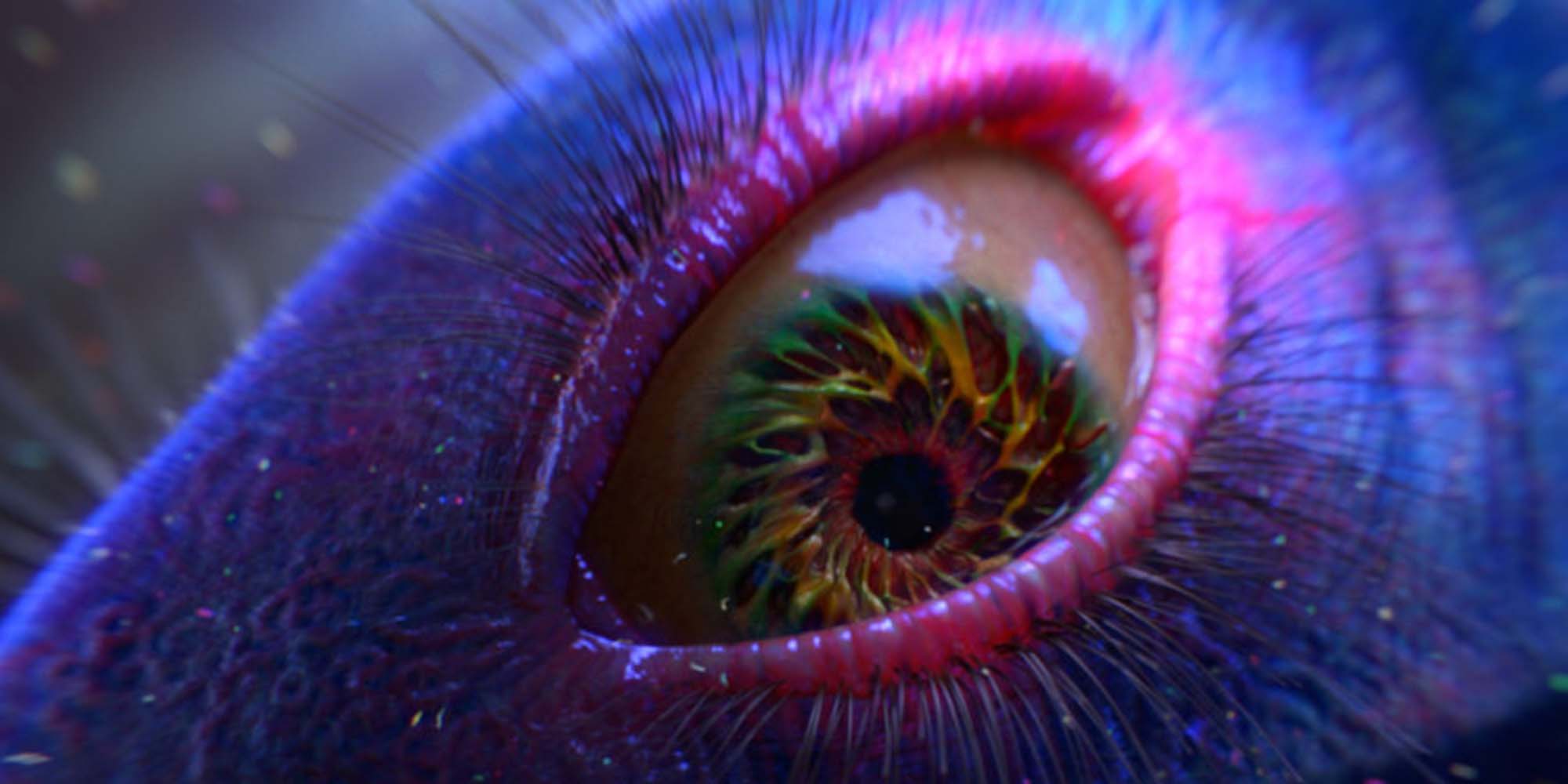
MIAZMAT / Klaudiusz Wesołowski
The LENTOS Kunstmuseum, located on the southern bank of the Danube opposite the Ars Electronica Center, has the largest exhibition space in Austria and hosts the annual Ars Electronica Featured Artist exhibition. This year, for the first time, the focus is not on an artist or artist collective, but on Ars Electronica itself. “Ars and the City” celebrates the 40th anniversary of our institution, but also and above all focuses on our relationship with the City of Linz. Companions recount the history of the institution, projects from past years are on display and, last but not least, the exhibition focuses on how the two, Ars Electronica and the City of Linz, have influenced each other.
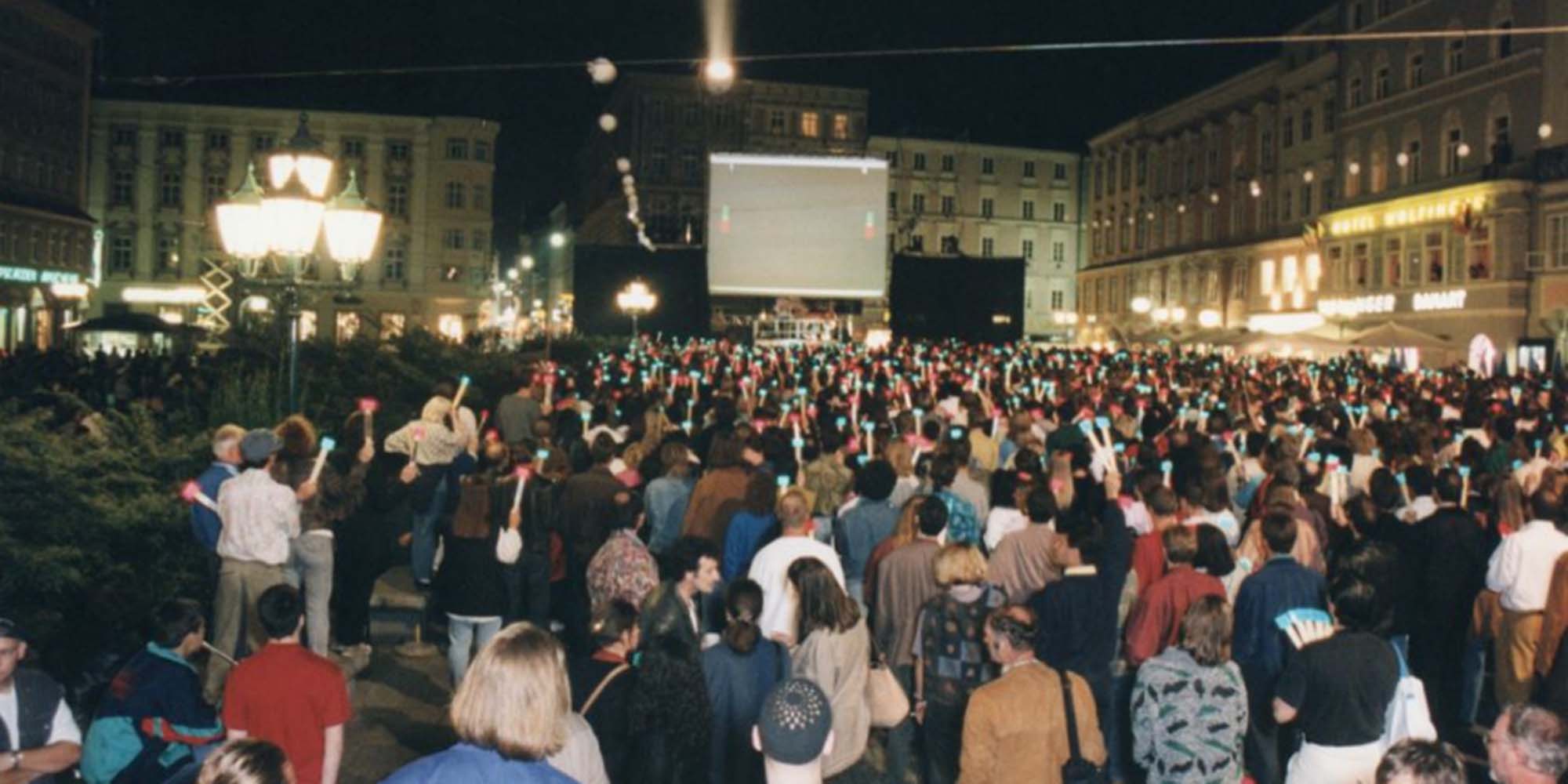
Audience Participation / Loren & Rachel Caprenter, CINEMATRIX™, Credit: Felix Nöbauer
Not only the festival team but also the other departments are busy: The Ars Electronica Futurelab is conducting research into the transportation professions of the future. On behalf of the Austrian Road Safety Board, a comprehensive study was conducted on how occupations in the fields of mobility and logistics in road traffic could change by 2050.
Together with the company BRP Rotax, the Rotax MAX Dome is being opened: A two-storey racetrack for the company’s new e-carts, sharp bends, games and rapid rides through virtual worlds. In short: a driving experience like you can’t get anywhere else.
NTT and the Ars Electronica Futurelab will also be providing an insight into their joint research and presenting a new swarm of robots for art, entertainment and sport. The innovative swarm technology will be presented in several performances in July 2019 at the Miraikan, Japan’s National Museum for Futurology and Innovation in Tokyo.
August: Stage, Festival, Playground and Showcase
One of the world’s largest stages for media art, a festival for digital music, a playground for the next generation, a showcase for creativity and innovation – Ars Electronica is a unique festival for art, technology and society worldwide: In 2019, as previously announced, this festival will be 40 – and will celebrate its anniversary with the most extensive program in its history. In August, even more program items of this gigantic birthday party will be unveiled…
A selection of the Prix Ars Electronica‘s best works will be presented in the CyberArts exhibition at the OK in the OÖ Kulturquartier. The show confidently assumes its role as a visionary observation station and uses award-winning international media art projects to showcase the trends and current developments of our time.
How far can we as humans go, where are our personal limits, where are the limits of our bodies? Under the title “Human Limitations – Limited Humanity”, the 2019 Ars Electronica Festival‘s theme exhibition not only explores these simultaneously very individual questions, it also poses perhaps the greatest questions of society itself. New technologies such as bioengineering or artificial intelligence make it more important than ever to reflect on the moral principles we impose on ourselves, co-producers Christl Baur and Gerfried Stocker, artistic director, firmly believe.
Since 2002, the Campus Format at the Ars Electronica Festival has been bringing international universities to Linz to present their work and exchange ideas. This year, 57 universities are represented in POSTCITY and the University of Art and Design Linz with more than 200 projects.
It is the prelude to the first “AIxMusic Festival” and at the same time one of the last concerts that will take place in POSTCITY Linz during the Ars Electronica Festival: The Big Concert Night 2019: We spoke with Norbert Trawöger, Artistic Director of the Bruckner Orchestra Linz, and Gerfried Stocker, Artistic Director of Ars Electronica, about this fascinating place, Gustav Mahler and artificial intelligence.
That’s what drives us and that’s more necessary than ever for people in the 21st century. To bring people in here who have perhaps never heard of Anton Bruckner, Gustav Mahler or any other composer. I think that’s really great.
Norbert Trawöger, Artistic Director of the Bruckner Orchestra Linz, about the Big Concert Night
The Ars Electronica Nightline is an annual highlight of the Ars Electronica Festival program, not only for dance enthusiasts. Late on Friday evening, the Track Hall of POSTCITY will host a series of media art, electronic music and performances.
Create your own compass, imagine the future: That’s what the new Art Thinking School, which will take place for the first time at the 2019 Ars Electronica Festival, wants to do. Building on Ars Electronica’s 40 years of expertise with Art Thinking, the new initiative will guide visitors through the extensive festiva – with an Art Thinking attitude. The new program is designed to provide space for reflection on the inputs, questions and inspirations one encounters along the way through the festival program.
The festival’s Deep Space programme also features a variety of projects that make full use of the technical possibilities of Deep Space 8K. From walk-in three-dimensional pyramids, gigapixel images of Leonardo da Vinci’s recordings, a live stream to Japan in 8K resolution to fascinating live concerts with the appropriate visualizations – this year’s Deep Space program is more versatile than ever before!

Quantum Logos / Mark Chavez, Ina Conradi, Tate Chavez, Bianka Hofmann, Bob Kastner, Credit: Magdalena Sick-Leitner
3,000 square metres of PERI elements, 370 spotlights, 370 computer systems, 1,200 extension cables: The fact that a festival of this size is no small thing was something we tried to bring closer to you on Facebook at the end of August with this nice graphic “The festival in figures”:
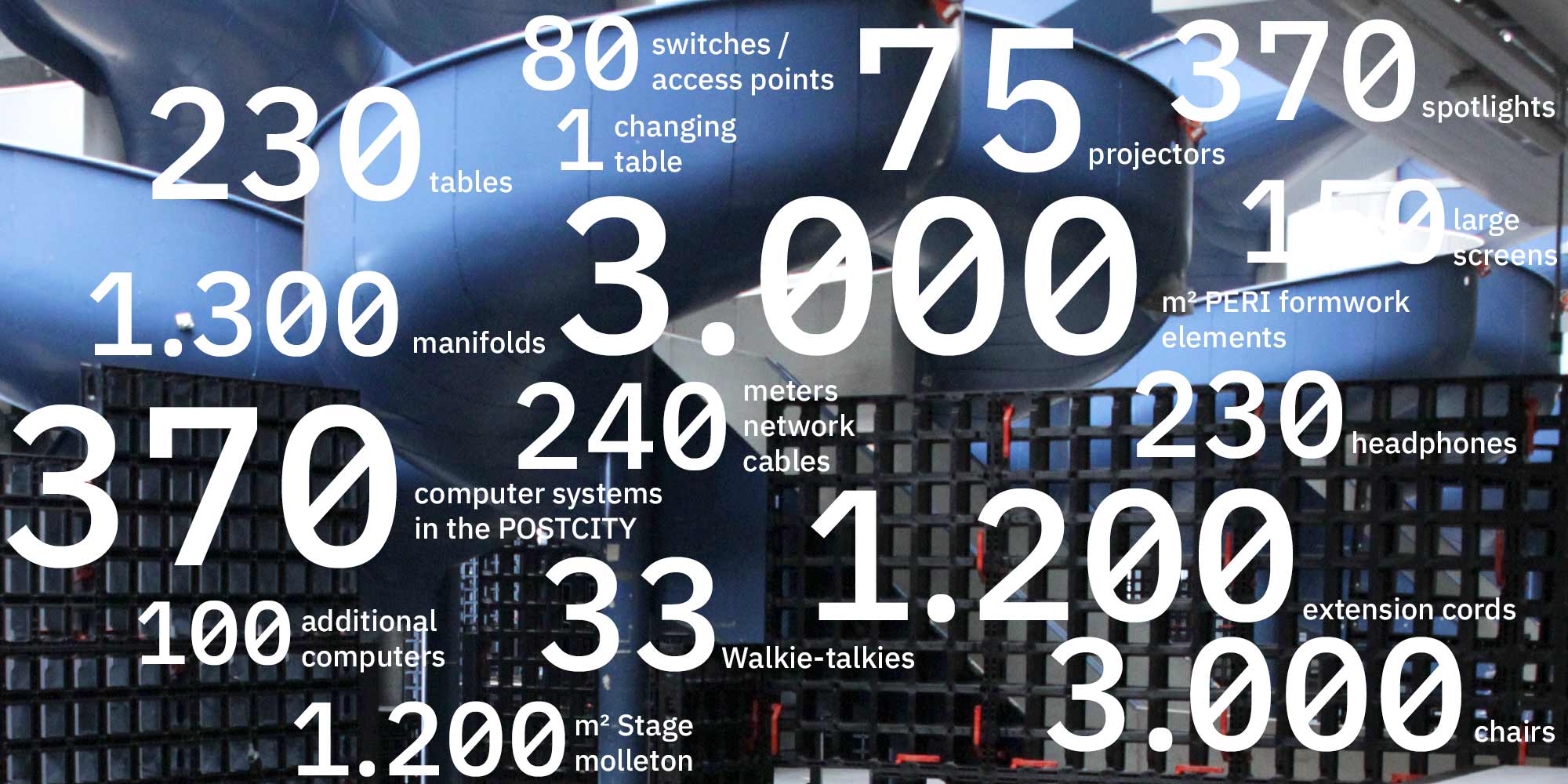
The Festival in Figures, Credit: Martin Hieslmair
That sounds like a huge program? It is, and so that our visitors don’t get lost in the abundance of formats, exhibitions and events, we have prepared festival tips for you in advance: For students, for music lovers, for art fans, for families, for activists, for technology freaks & gamers, for newbies as well as for Linzers and companions.
September: Let the games begin!
In a few days we’ll be on our way! Not only in POSTCITY but at all the festival venues, construction, drilling, sweeping and fine tuning is still in progress before the Ars Electronica Festival opens its doors to visitors for the 40th time on Thursday, September 5, 2019.
Even before the festival officially starts, on Wednesday evening the local audience in particular is invited to a first opening round, the Pre-Opening. Four locations of Ars Electronica 2019 can be visited in advance: the Mariendom, the LENTOS Kunstmuseum, the Linz University of Art and the new Ars Electronica Center.
At LENTOS, we’ll be popping the corks for the first time when the founding fathers of Ars Electronica, Hannes Leopoldseder, Walter Haupt and Siegbert Janko, open the “Ars in the City” exhibition.

Hannes Leopoldseder, Walter Haupt and Siegbert Janko, Credit: tom mesic
And then it’s finally here! It’s Thursday, 10 a.m., day one of the 2019 Ars Electronica Festival is about to begin! You missed the opening day? Well, okay, we’ll let you take part in the highlights again:
Thursday evening will also see the big birthday gala, during which the Prix Ars Electronica and STARTS Prize winners will be honored and the “birthday baby” congratulated. We are also very pleased that Austria’s Federal Chancellor, Brigitte Bierlein, will be honoring us as a congratulator.

Brigitte Bierlein at the Ars Electronica Gala 2019, POSTCITY, Credit: Jürgen Grünwald
After the gala, free admission to the inner courtyard of POSTCITY will be followed by a musical opening program in which artificial intelligence will play a not insignificant role as a supporting actor to the fantastic artists.
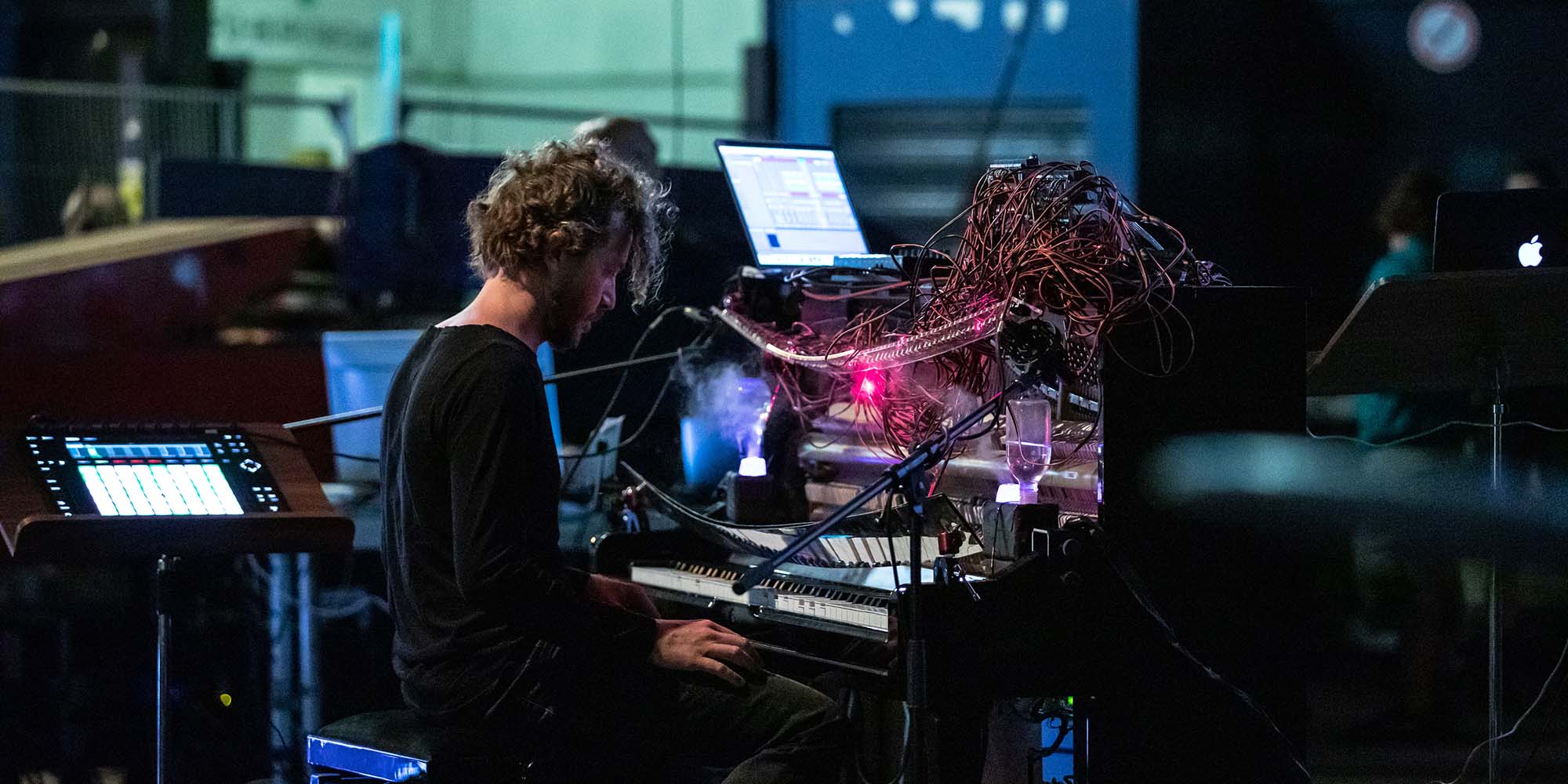
A-MINT / Alex Braga (IT), Credit: Philipp Greindl
Day 2 – the festival weekend is coming up! The country’s business leaders invite you to a think tank, the EU initiative STARTS introduces itself in talks and project presentations, Fridays for Future visit us at the festival, the animation community enjoys animated films for the first time in POSTCITY and finally the audience can listen to an artificial intelligence starting its attempt to complete Mahler’s 10th symphony.
At 13.15 it suddenly becomes quiet in POSTCITY. The whole festival pauses, visitors look around questioningly. It is not an unplanned power outage, no, it is the young activists of Fridays for Future who are fighting against the Climate Shutdown.
Let’s skip ahead a little: In the evening the gates of the track hall of POSTCITY open to celebrate the already announced big concert night. Since 2003, collaboration with the Bruckner Orchestra has been a fixed and unique part of the Ars Electronica Festival. A collaboration that makes it possible not only to perform interesting works, but also to develop unique overall artistic projects each year, in which orchestral music, electronic music, robots, dancers and digital images come together in a variety of ways. This year’s project is entitled: The “Mahler-Unfinished” Project.

“Mahler-Unfinished”, Credit: Jürgen Grünwald
Saturday is packed with events, talks, exhibitions, forums, conferences – it’s really hard to be everywhere. A colourful hustle and bustle across the festival locations. First and foremost the St. Florian branch – the “AI x Music Festival” is taking place in the Stift for the first time.

SHOJIKI “Play Back” Curing Tapes / Muku Kobayashi (JP), Mitsuru Tokisato (JP), Credit: vog.photo
Meanwhile the ZusammenHelfen Konferenz takes place in POSTCITY, the BR41N.IO Hackathon invites the next generation of hackers for programming and the farmer’s market of BIO AUSTRIA provides the culinary catering.
The ” Future Festival for the Next Generation”, the “Festival within the Festival”, once again this year invites you to experiment and try things out. At the create your world FESTIVAL new technologies, unusual life models or concepts and ideas can be tested in an Open Lab.

abc-Dojo / Pädagogische Hochschule Oberösterreich, Credit: Philipp Greindl
Sunday is all about a European identity in the coming digital developments – open into the future! In the evening we will go to the Danube Park to pay homage to the very first sound cloud, the “Episode by the River”. And once again a statesman will visit us: Federal President Van der Bellen will stop by the anniversary festival and take the time not only to visit the exhibitions but also to meet the activists of Fridays for Future.

President of Austria, Alexander Van der Bellen, together with activists of Fridays for Future, Credit: vog.photo
Even the most eventful festival comes to an end at some point. We can still enjoy one last, wonderful day with Music Monday – traditionally, this day is all about music. With the farewell to the festival, Ars Electronica is also saying goodbye to the festival location POSTCITY.

Piano Sonata / Maki Namekawa (JP), Cori O’lan, Credit: tom mesic
Whew, an eventful five days that was! We look back on the whole festival once again in quick review:
The media interest in the Ars Electronica Anniversary Festival was huge: The Bayrischer Rundfunk (Bavarian Radio) visited us, which resulted in both a documentary and a radio report. The French news agency Agence France Press traveled to Linz to report on our media art festival. We even made it to the Spanish media this year: EFE, the Spanish news agency, also shot here.
Back to normality, for us as well as for the school children in the country: it is now time to accompany Tardi through the microcosm, experiment with robots or compose music ourselves: The start of school at the Ars Electronica Center is also the kick-off for new educational programs designed specifically for school classes.
Together, these stations represent a fusion of our natural and artificial environments that is negotiated there as a matter of course. In this self-image, nature and art/culture are experienced and discussed as inseparable and thus of equal value.
Nicole Grüneis, Head of the Ars Electronica Center’s Education and Cultural Education Department
October: No time for standstill
The Ars Electronica Autumn is about to begin, and that means it’s getting “a little” quieter after the turbulent last few months – but by no means boring!
All over Austria, numerous museums and galleries will be opening their doors to culturally interested night owls on October 5 under the title “Long Night of Museums”. At the Ars Electronica Center, the focus will be on the new exhibitions. Till 1 a.m. there will be guided tours every hour, Deep Space 8K presentations will take place continuously, and there’s plenty to discover for young and old musicians alike, as well as technology freaks and playful people. Here you can find our tips for further reading.
The Ars Electronica Center will also be the venue for the Bestoff exhibition, the annual exhibition of students from all fields of study at the University of Art and Design Linz, from October 8 to 22.
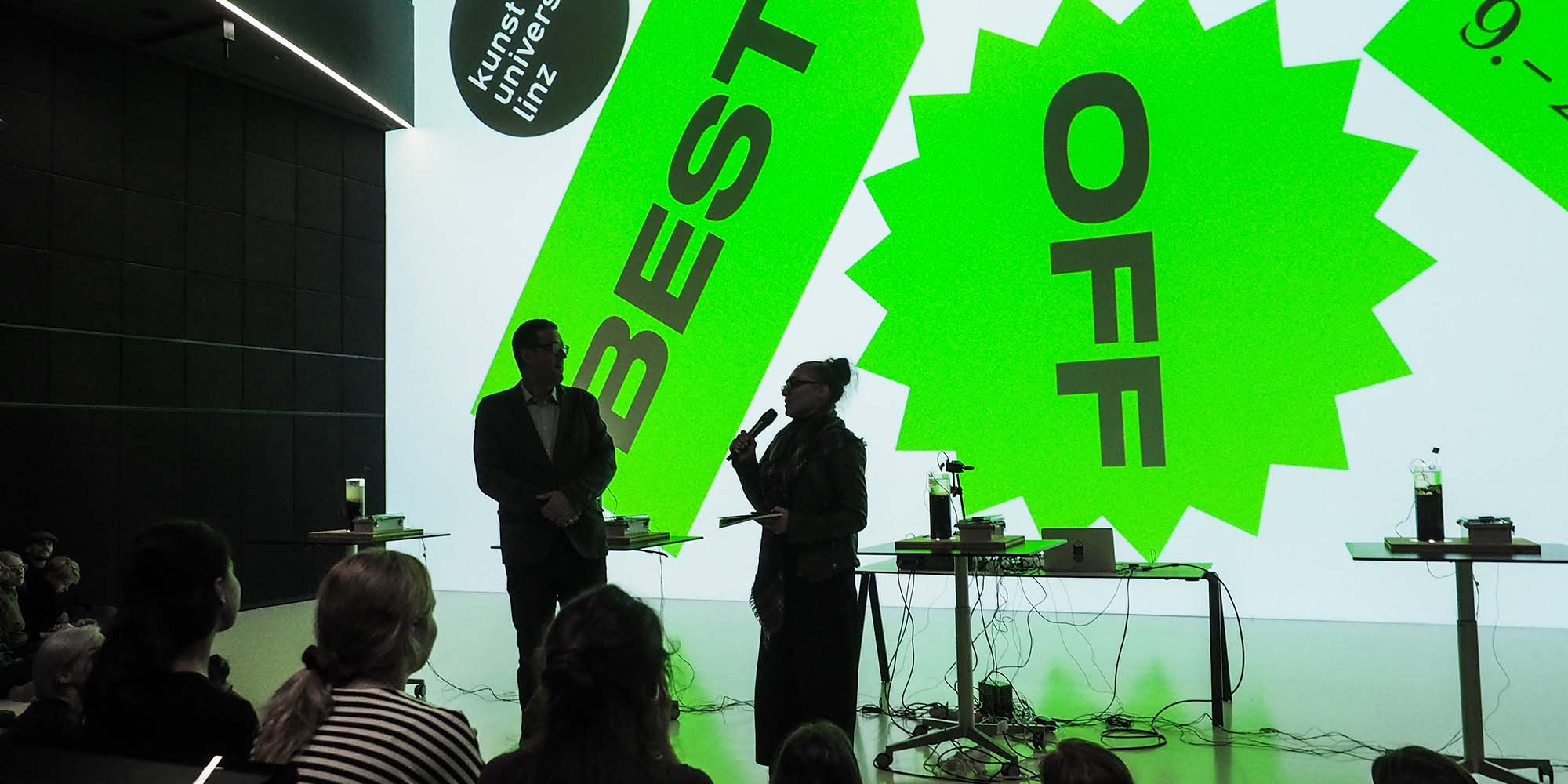
Bestoff Opening 2019, Credit: Ars Electronica / Martin Hieslmair
Does an AI dream of tulips? Can a kiss be transferred into neurofeedback data? Or what would the ultimate species of a post-climate change world look like? These are just a few questions that artists playfully explore in the European Media Artists Residency Exchange programme. EMAP awards annual production grants to outstanding European media artists, thus supporting research, production, presentation and distribution of media art in Europe and beyond. The Open Call for Residencies in 2020 and 2021 will run until December 2.
The European ARTificial Intelligence Lab also offers international artists working in the field of artificial intelligence the opportunity to win a residency at a scientific partner institution and at the Ars Electronica Futurelab. Open Call Number Two starts!
As part of the “Future in a Nutshell” lecture series organized by Ars Electronica for Greiner Technology & Innovation, Michael Haller, Professor at the Department of Interactive Media at the Upper Austria University of Applied Sciences and founder and director of the Media Interaction Lab, will speak about Imperceptible Textile Interfaces. Elena Robles Mateo will also report on her research project, which is interested in presenting networks of women in media art since the 1990s. In her work, she has referred, among other things, to the Women in Media Arts database of Ars Electronica.
Even though it’s already a few weeks in the past, we’ll be reviewing the 2019 Ars Electronica Festival with a slight delay. On the one hand, we will reflect on the theme exhibition again, because Human Limitations – Limited Humanity is a topic that will occupy us for a long time to come…
On the other hand, we think again about the connection between artificial intelligence and music. More precisely, we are thinking further. Maybe AIxMusic is also a connection that will remain with Ars Electronica for a long time to come?
Technology as an indispensable invention of mankind or as a self-runner that will overtake us in the future? The exhibition “40 Years of Humanizing Technology – Art, Technology and Society” designed by the Central Academy of Fine Arts Beijing (CAFA) and Ars Electronica, which opens in Shenzhen on November 2, deals with the question of the contrast between man and technology that has been present for 40 years.
The exhibition shows the great sensitivity and fine feeling with which media artists have been accompanying, analysing, criticising and advancing the digital revolution for decades. And the show makes clear the high level of expertise media artists possess in involving a broad public in a discourse about the future that is based on critical faculties, self-confidence and optimism.
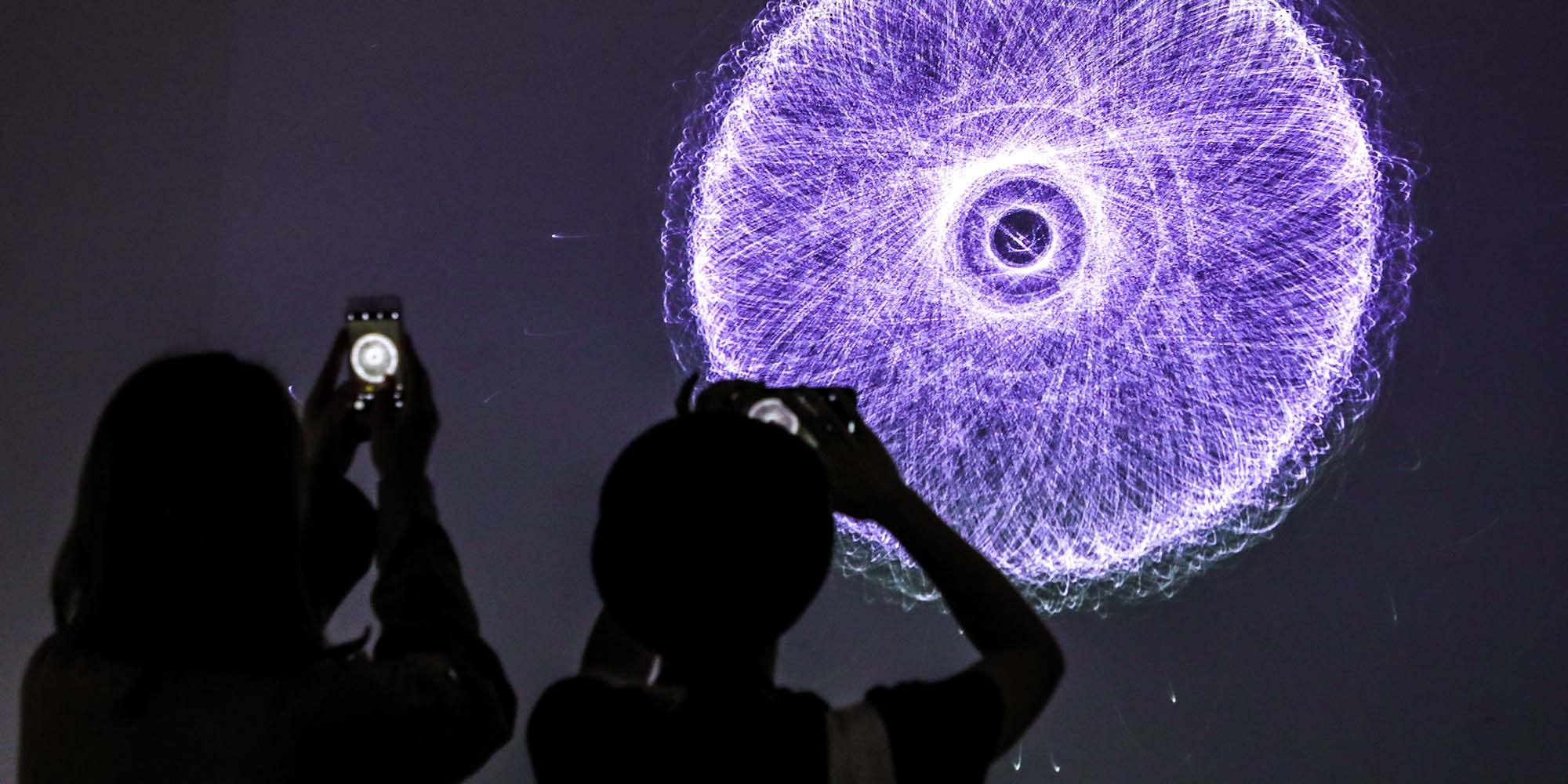
Positions of the Unknown / Quadrature (DE), Credit: Design Society
Meanwhile, Ars Electronica Solutions is active throughout Austria from its base in Linz: The exhibition “Out of Control – What the Digital World Knows about You”, conceived by Ars Electronica Solutions, focuses on aspects of digitization and raises awareness of the issue through informative and playful interactive installations. In order to make this thematic field accessible primarily to young people, but also to a broad public, the city of Bregenz is now bringing the exhibition to its premises for a period of two months.

„Out of Control“ in Bregenz, Credit: Udo Mittelberger
„Smart Home – Sweet Home?“ is an exhibition on the subject of smart home by the Salzburg Chamber of Labor and Ars Electronica Solutions. Beginning in October 2019, the exhibition will take a year to examine the effects of ever-increasing digitization on our everyday lives in Salzburg and the Chamber of Labor’s district offices in Zell am See, Bischofshofen, Tamsweg and Hallein.

“Smart Home – Sweet Home?”, Credit: Ars Electronica / My Trinh Müller-Gardiner
Last but not least, Ars Electronica Solutions is leaving its mark in Linz: In the Prunerstift, children will be able to train their musical memory by finding pairs of sounds. Likewise, from now on interested parties can use an announcement screen to find out about events and highlights at the music school. In order to shorten the time children wait for their lessons, an “acoustic memory” is now available in the foyer, which not only promotes playful access to sounds, but is also a pedagogically valuable, interactive game that trains hearing and memory.

Opening Acoustic Memory at LMS Linz, Credit: Ars Electronica / My Trinh Müller-Gardiner
Artificial intelligence, virtual realities and nothing less than our future in the digital age. Starting in October, Life Radio will be talking about these topics once a month with proven experts from Ars Electronica. In Part One, for instance, Artistic Director Gefried Stocker explains why technology isn’t to blame, in Part Two Christoph Guger from g.tec and Erika Mondria control objects with the power of their thoughts and in Part Three Ali Nikrang, researcher and artist from the Ars Electronica Futurelab, discusses suitable (smart) Christmas presents. Have fun listening!
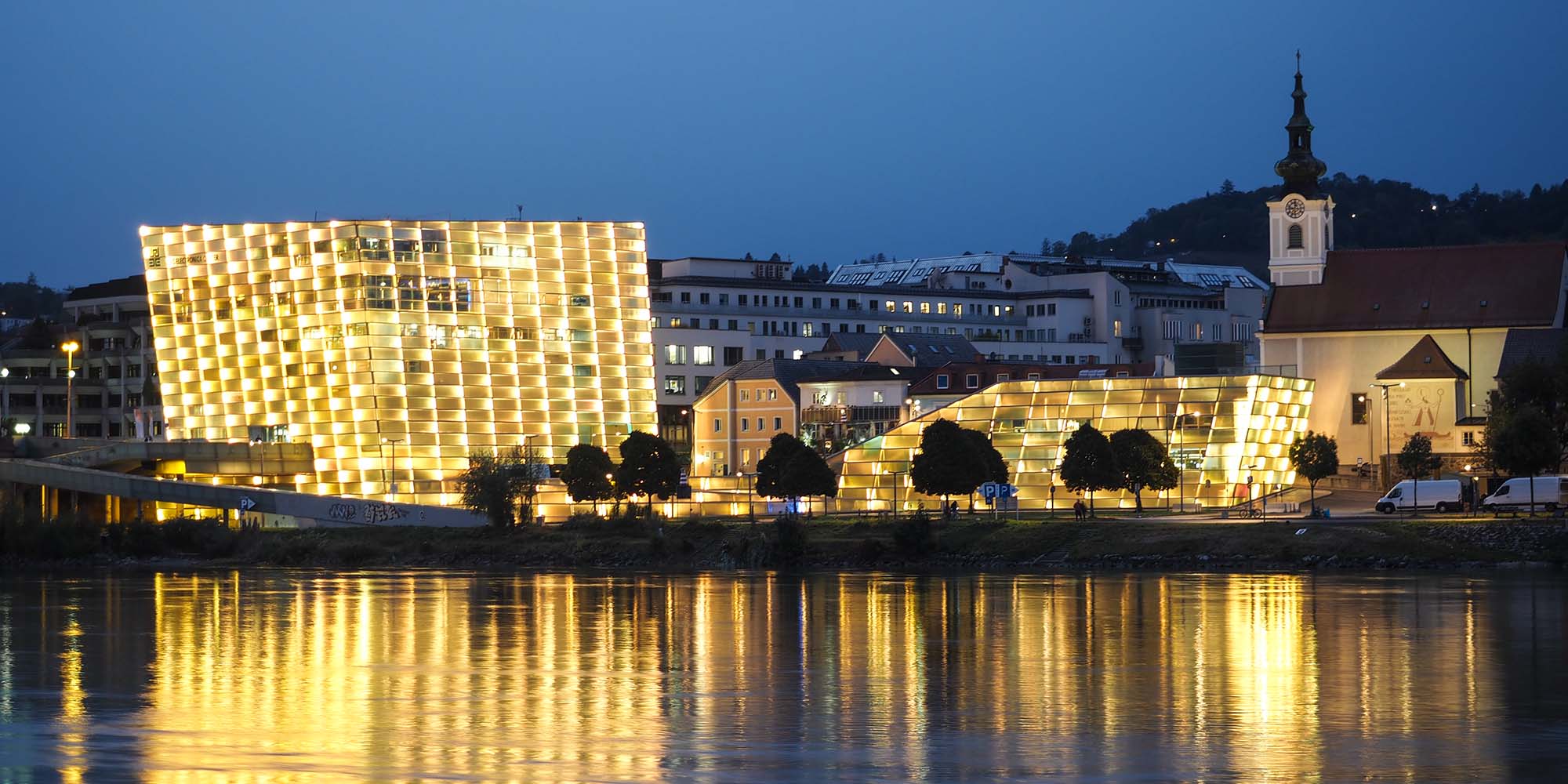
Ars Electronica Center all Yellow, Credit: Ars Electronica / Martin Hieslmair
November: Ars Electronica around the World
A complete tree with branches and leaves, but as small as a potted plant: a bonsai becomes the symbol of “In Vivo”, which illuminates the border region between life and death. Behind it are the two artists Ernest Wu and Jake Tan from Singapore, who will be working on their interactive installation in November as part of the “STEAM Imaging II” artists’ residence of the Fraunhofer Institute in Linz. The work will be presented next year at the Ars Electronica Festival.

Patient Bonsai / Ernest Wu (SG), Jake Tan (SG), Credit: Ars Electronica / Martin Hieslmair
What limits have we overcome thanks to our creativity and inventiveness and have made the supposedly impossible possible? What consequences does this have for us, for our self-image and the importance we attach to ourselves in the world? What old and new limits do we come up against despite all our successes – as individuals and as society(ies)? And what limits should we perhaps set ourselves voluntarily in the future? “human (un)limited” is the title of the current and second major exhibition project by Ars Electronica and Hyundai Motorstudio. In an interview, Martin Honzik, Director of Ars Electronica EXPORT and curator of the show, explains what this is all about.
“human (un)limited” is essentially inspired by two things: On the one hand, from our joint exhibition project with Hyundai last year, which was about “Future Humanity”. On the other hand, we tie in with the spectacular themed exhibition at this year’s Ars Electronica Festival, which was all about the tension between “Human Limitations – Limited Humanity”.
Martin Honzik, Director Festival/Prix/Exhibitions at Ars Electronica
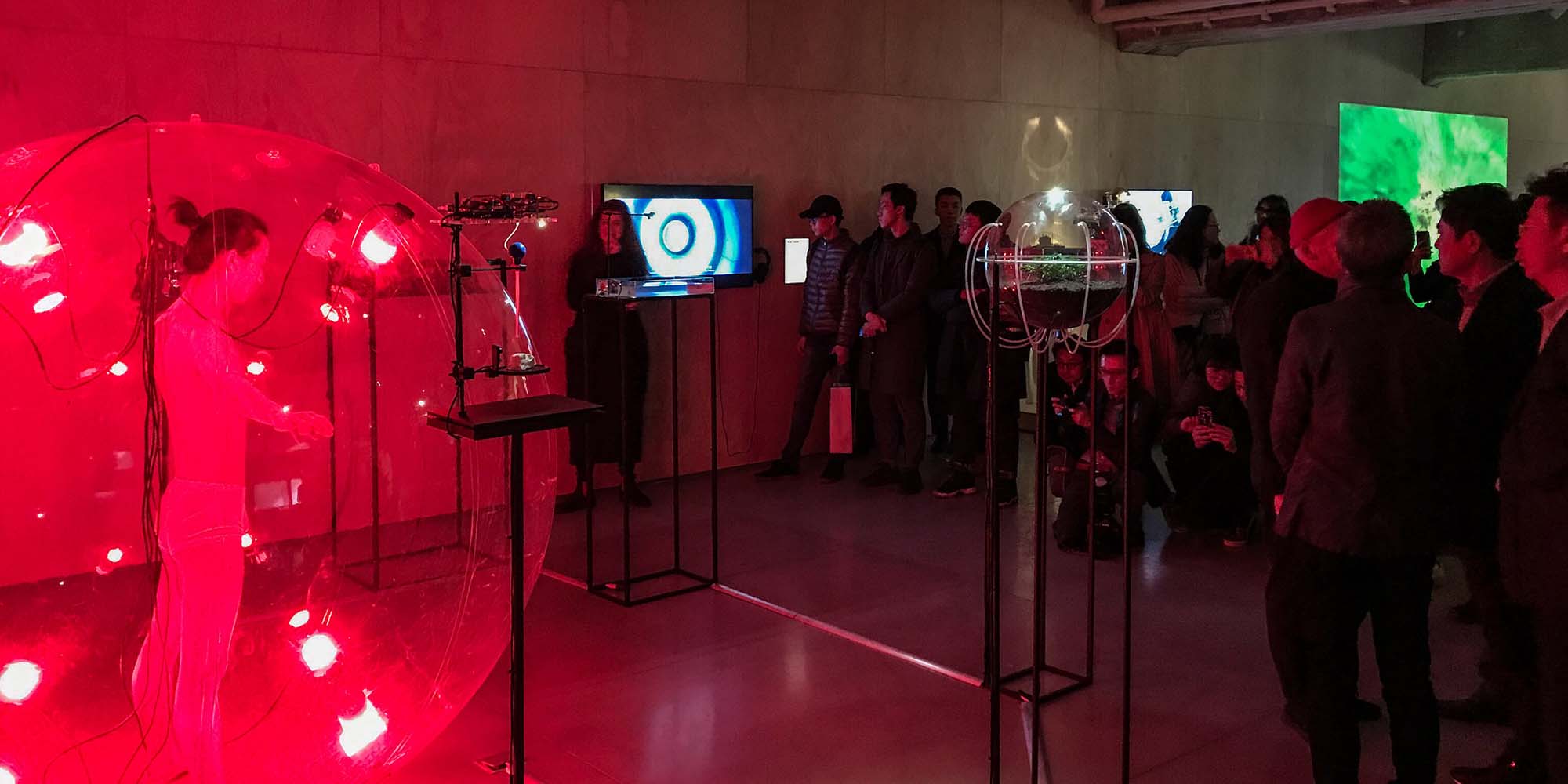
Internet of Everything: All Connections / Shaun Hu (CN), Credit: Hyundai Motorstudio
The Ars Electronica Futurelab’s “ShadowGAN” project is part of the “human (un)limited” exhibition series that is currently being shown in Beijing, Seoul and Moscow and will continue until the end of February. The focus is not on technology per se, but on the human being himself, including his weaknesses and strengths and his eternal search for his place in the world.
Maja Smrekar’s “!brute_force” – also part of the human (un)limited exhibition in Beijing – deals with the relation man-dog-machine. The basic message of the work is: even if we need technology, our existence must not be limited to machines.

human (un)limited exhibition, Credit: Hyundai Motorstudio
From November 16 to 17, 2019, the Ars Electronica Futurelab will be making a guest appearance at the International Science Art Festival in Matsudo, Japan – with the Ars Electronica Salon. On the theme of “Future Citizen,” not only will works by Japanese artist Etsuko Ichihara be on display, but three of her own works will also be on show.
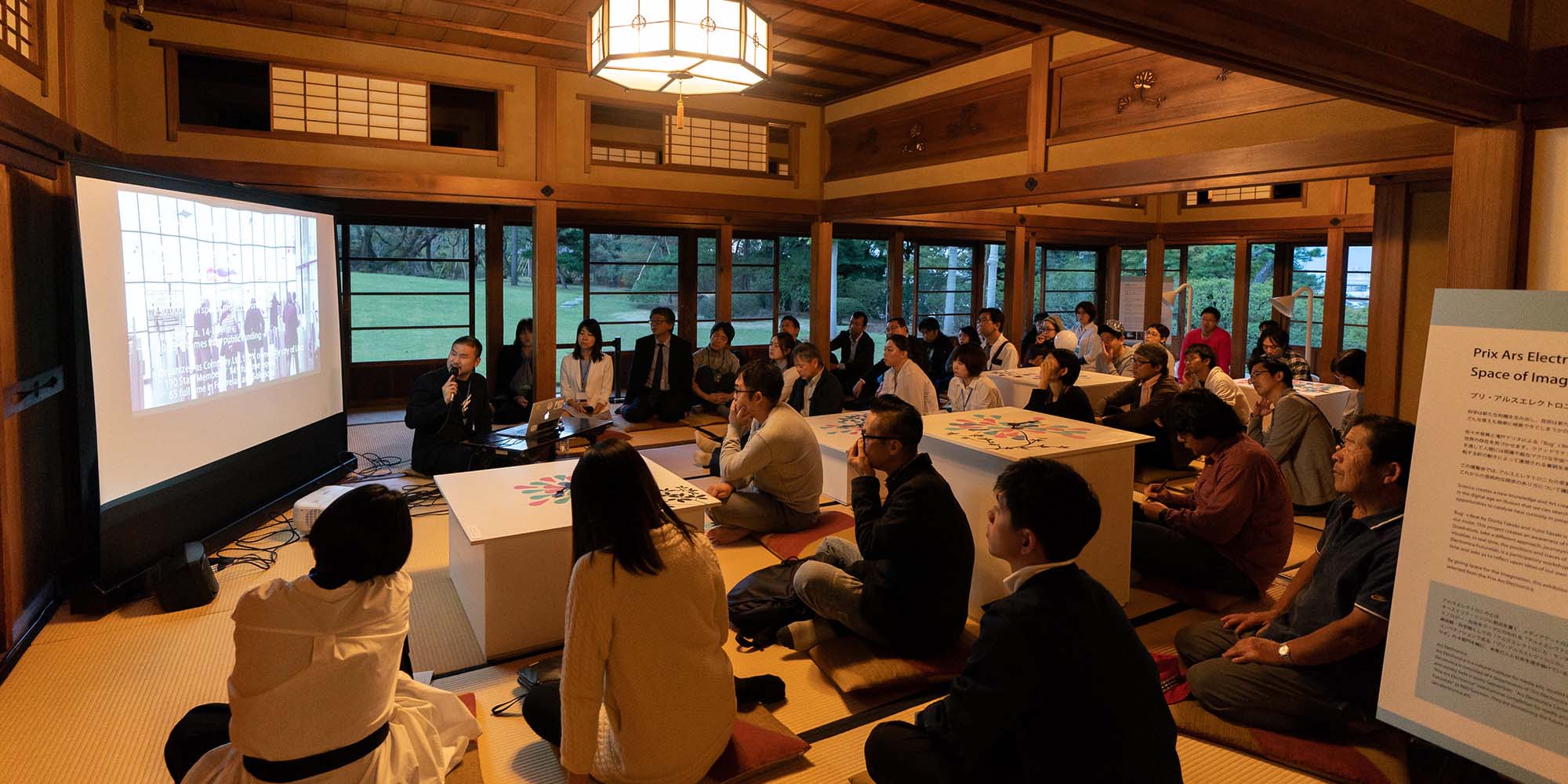
Ars Electronica Salon Matsudo, Credit: Hajime Kato
December: The World of Ars Electronica
“Komm in meine Welt” (EN: Come into my world) is a film by Simon Mück (AT) that was made at the 2019 Ars Electronica Festival. The young director had previously submitted several films to the Prix Ars Electronica in the u19 – create your world category, thus drawing attention to his talent. Now the work has been released. Simon would like to motivate all young people to submit as well.
Which artist is in the race for the next European ARTificial Intelligence Lab residency place together with the Edinburgh Futures Institute and the Ars Electronica Futurelab? The jury consisting of Suzy Glass, Drew Hemment, Martin Honzik and Horst Hörtner will be asking this question at the European ARTificial Intelligence Lab jury meeting in early December.
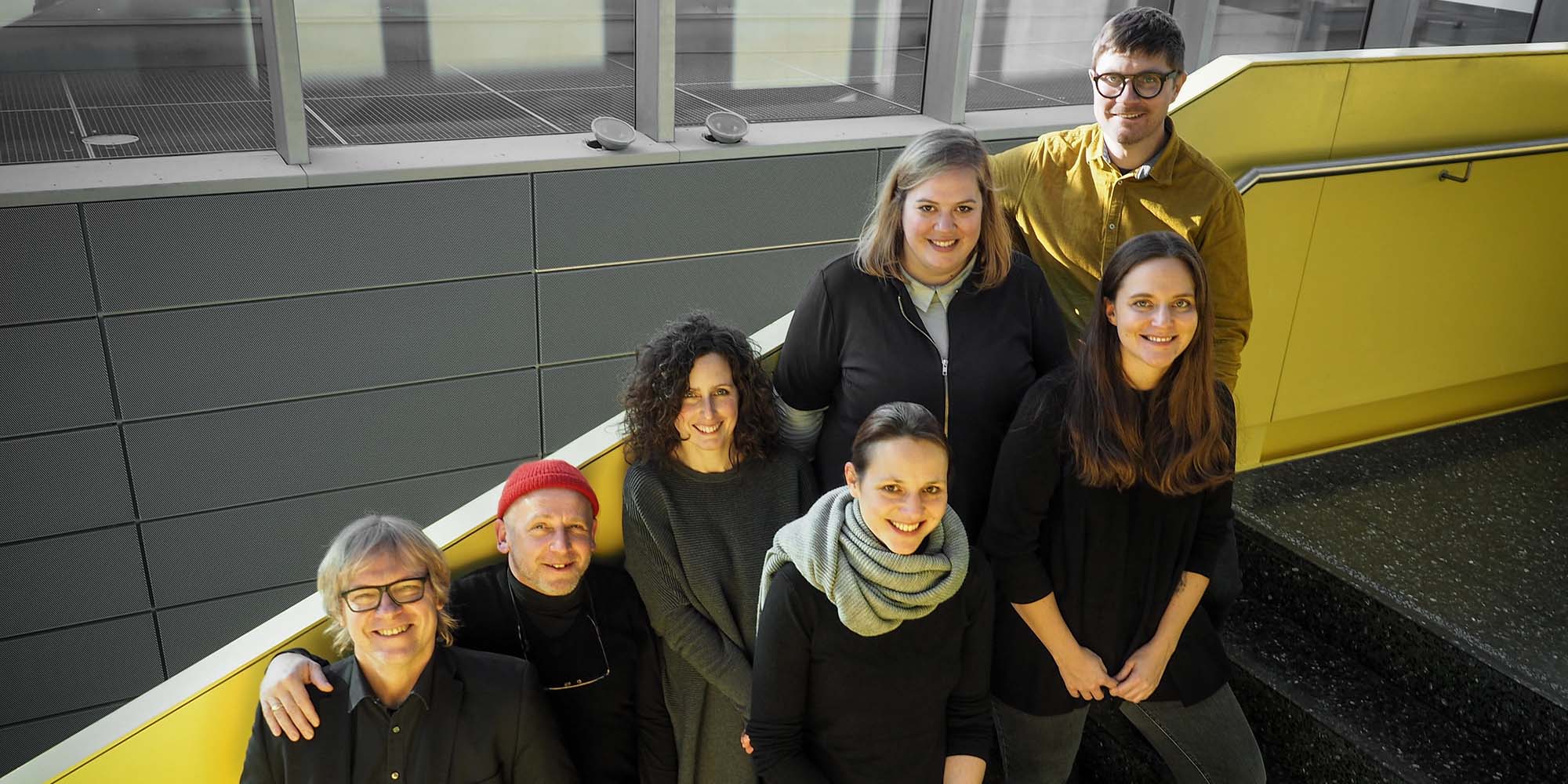
AI LAB Jury December 2019, Credit: Ars Electronica / Martin Hieslmair
No need to worry about boredom during school holidays! During the Ars Electronica Holiday Program on January 2 and 3, children of all ages can invent fantastic body extensions or use a microscope to discover fascinating microorganisms such as springtails or tardigrades in the moss.
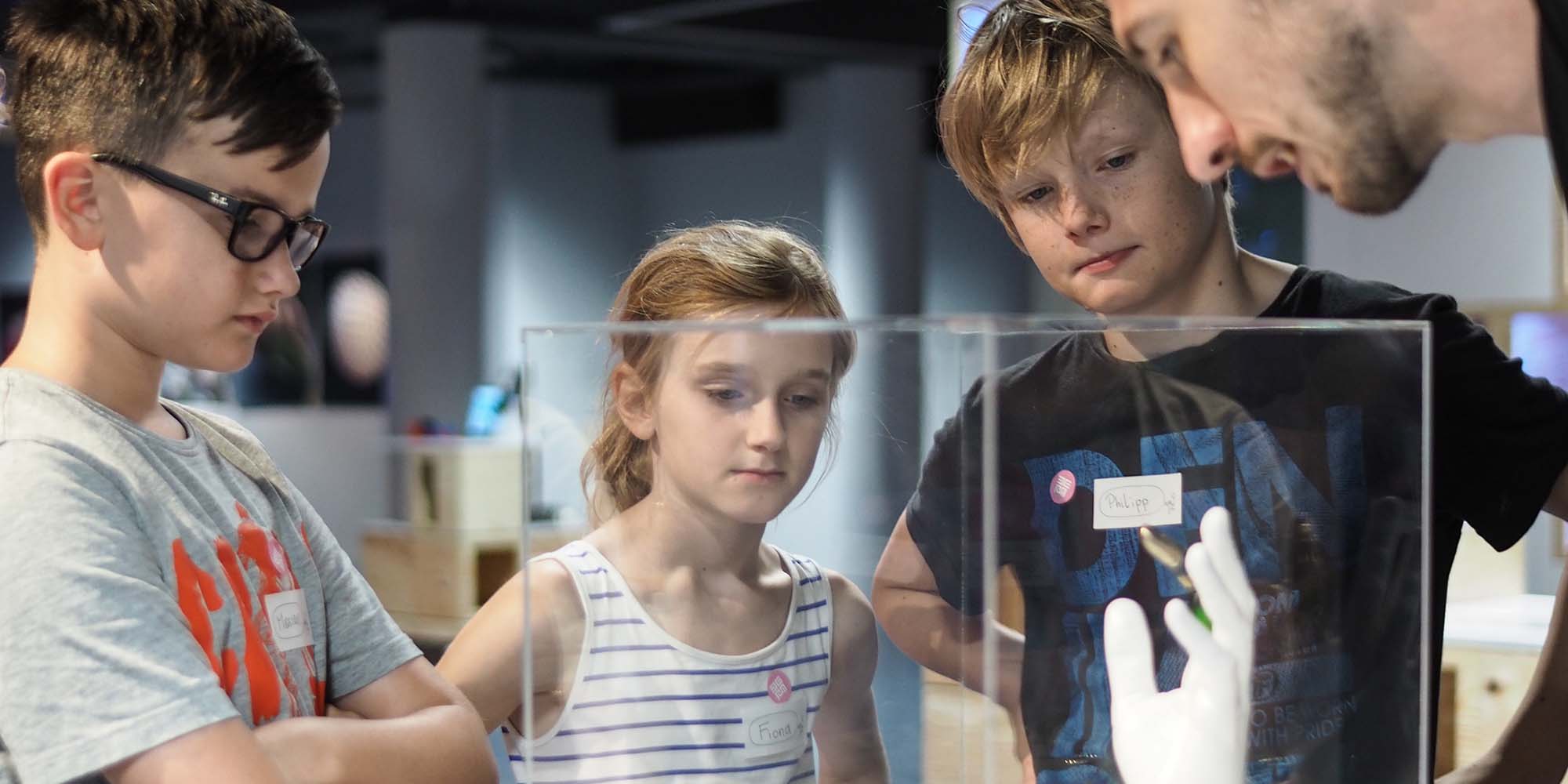
Future Matters, Credit: Ars Electronica / Martin Hieslmair
An Ars Electronica Solutions team is on tour at the Centro de Ciencias de Sinaloa in Mexico in December to train the mediation team for the opening of the first replica of our Deep Space 8K. We’re as excited as they are and wish them all the best for the go-live!

The first Deep Space 8K replica, Credit: Centro de Sciencias de Sinaloa
He once brought fire, technology, civilisation and art to the people – now AI is entering the stage: “Prometheus Unbound” celebrates its premiere on 14 December at the Landestheater Linz. It’s the second part of “social virtuality”, a project of the CyberRäuber Berlin, who are researching the theatre of the future in co-production with the Landestheater Linz and the Badisches Staatstheater Karlsruhe in cooperation with Ars Electronica and the ZKM – Zentrum für Kunst und Medien Karlsruhe. And it is an attempt to open up completely to the digital in the theatre, in order to ultimately return to the human being…
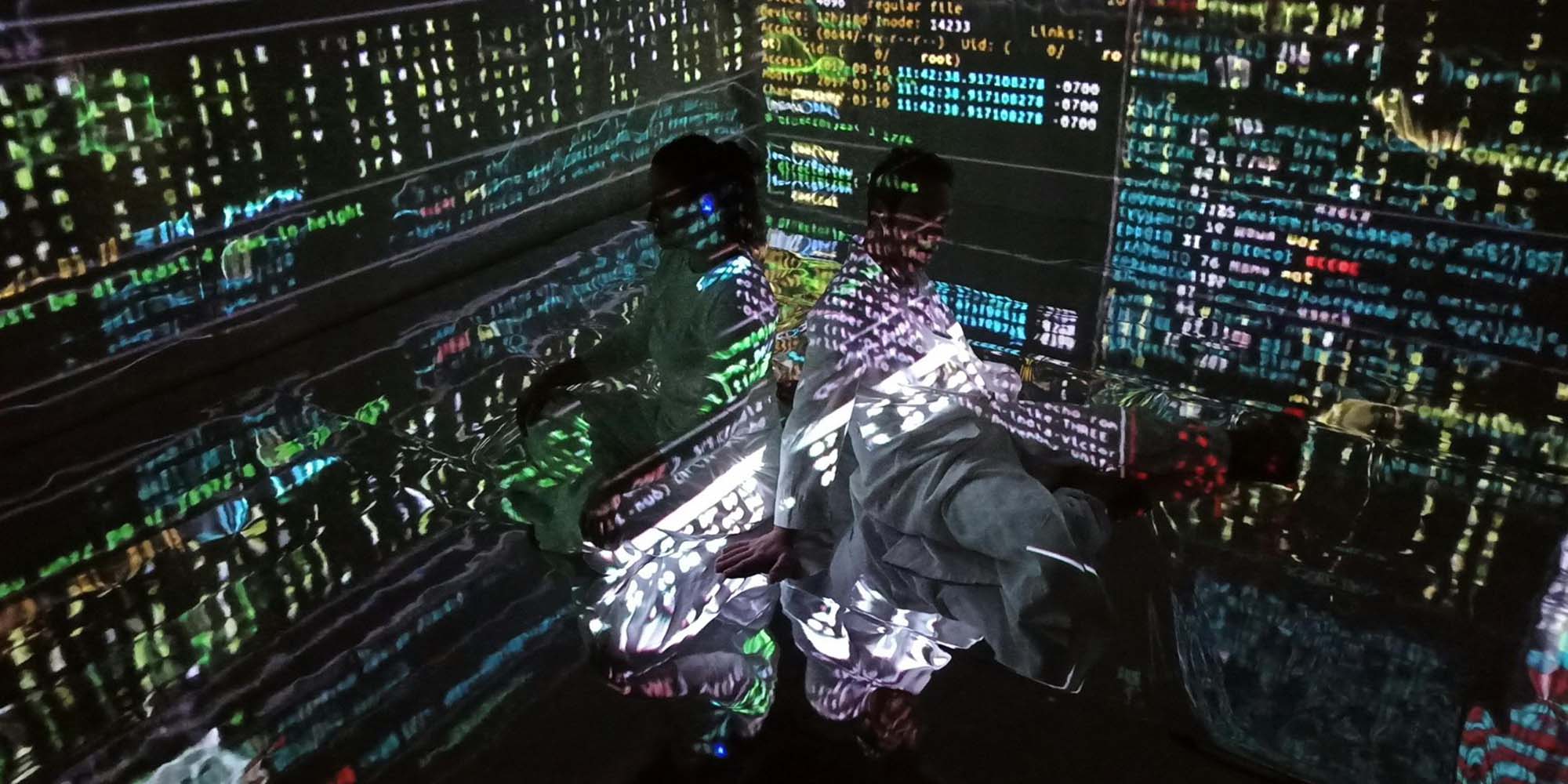
Prometheus Unbound, Credit: Marcel Karnapke
…and what’s next in 2020?
After this year of celebrations, we’re looking forward to a very special innovation in 2020: After five years, the Ars Electronica Festival is leaving POSTCITY and moving to the other side of the city, out to the JKU campus and into the Kepler Gardens – POST NATURE so to speak.
At the Ars Electronica Center, exciting workshops and guided tours of the new exhibitions and countless Deep Space and Deep Space LIVE presentations are on the agenda, Ars Electronica EXPORT is booking its next trip around the world, the Festival team is already polishing up the theme of the 2020 Festival, and the Open Call for the Prix Ars Electronica 2020 and STARTS Prize 2020 will begin soon.
If you’d like to stay informed about all this and other activities from all of our divisions, why not sign up for our newsletter, visit the Ars Electronica Blog from time to time and follow us on Facebook, Twitter, Instagram, Flickr and YouTube.
The Ars Electronica team wishes you a very happy new year!
